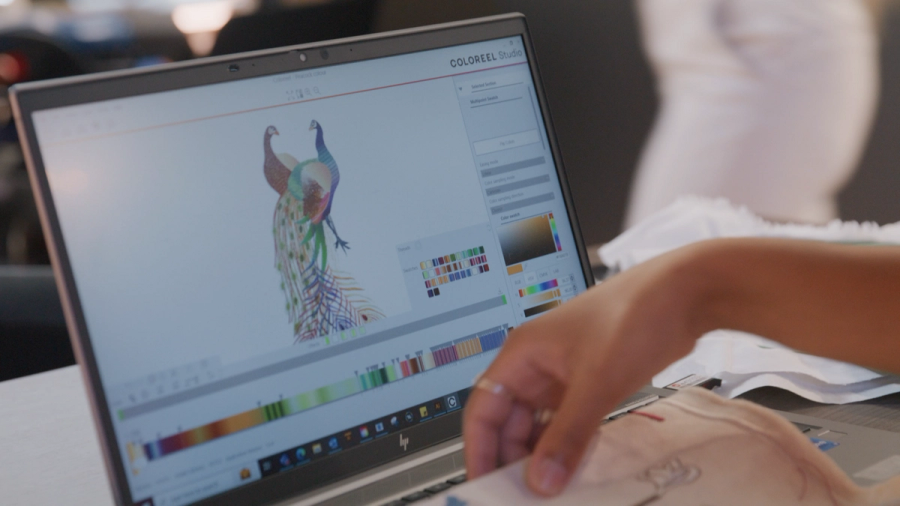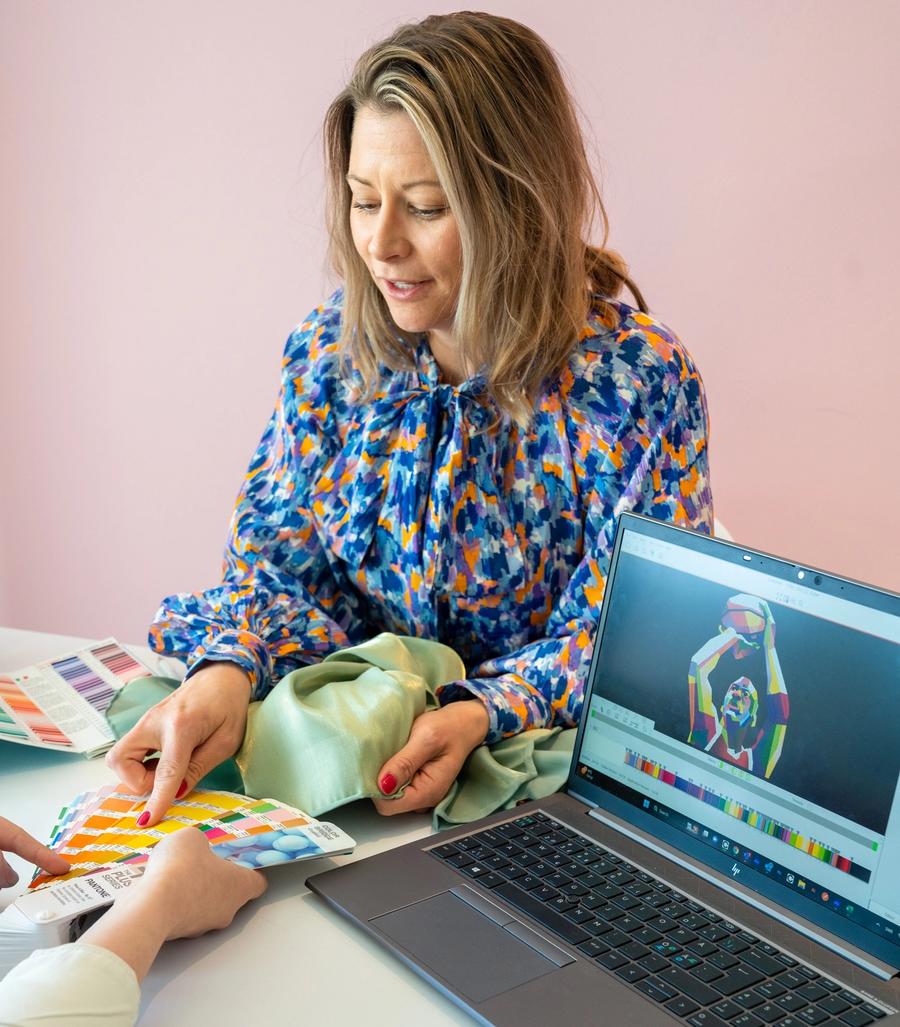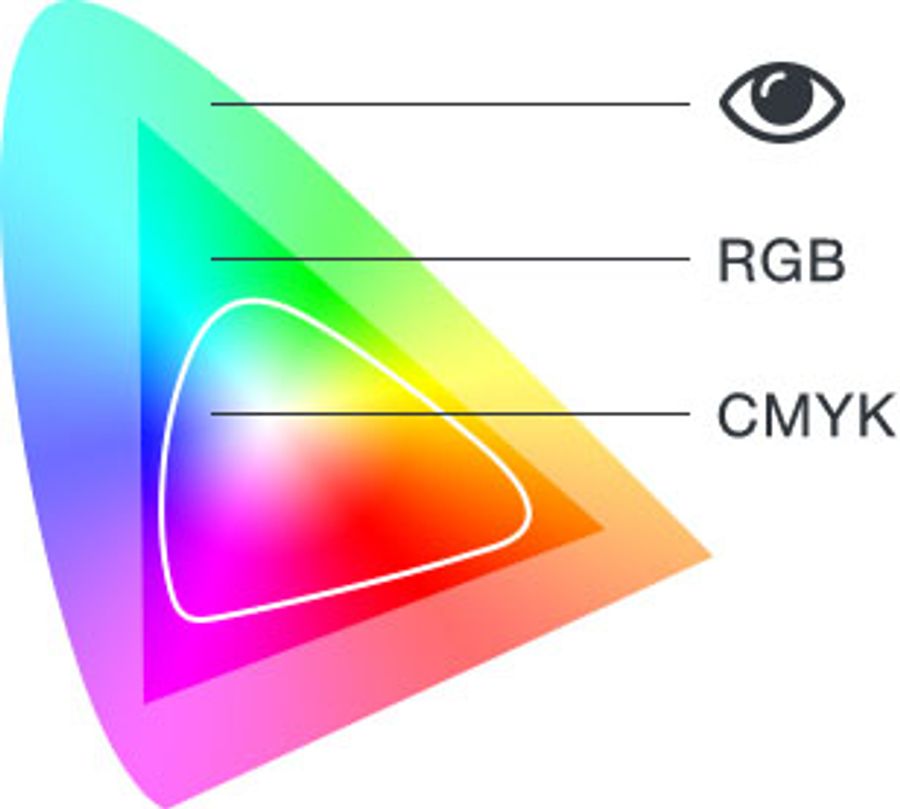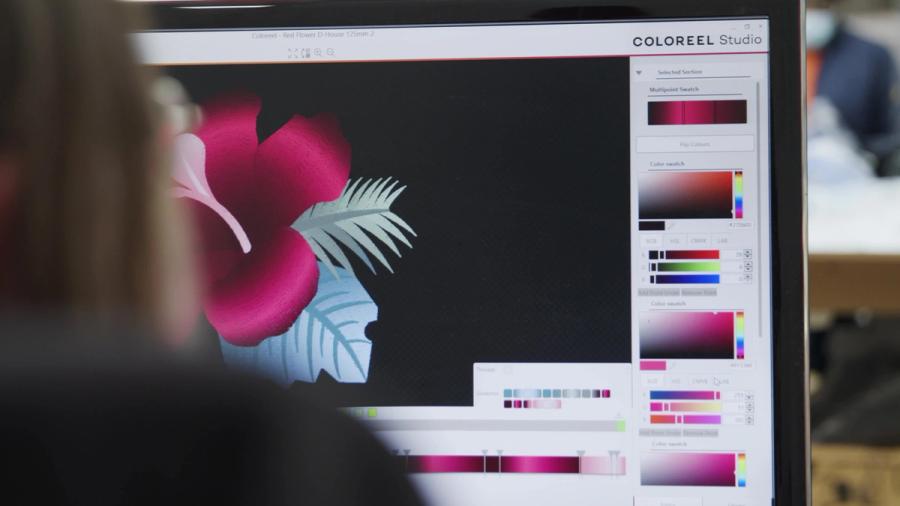Coloreel color management

Color plays a critical role in fashion, setting the mood and style of every piece. But navigating the transition from design ideas to a thread-based reality can be a challenge, especially for those new to embroidery. Understanding the basics of digital color management can make a huge difference.
When starting out, many embroiderers learn that pre-dyed threads and limited color palettes are typical for embroidery. But innovations like Coloreel are changing the game by allowing you to dye threads into any color, as you embroider.

Digital to physical color conversion
"If you work with traditional threads, you have limited color options for each design. If you work with Coloreel’s digital thread dyeing you get instant access to millions of colors. But as with all print, colors may look different in reality than they do on your screen", notes Mattias Nordin, SVP Product Management and Business Development at Coloreel.
Before dyeing an embroidery thread, you have to make a color conversion from your screen’s RGB color display to printed CMYK colors. This conversion from digital to physical can result in differences between the on-screen graphics and the finished embroidery design.
Colors on computer monitors are displayed in RGB (Red, Green, and Blue). Every color on a screen is made by combining different amounts of red, green, and blue light. It differs from digital print, which usually uses the color system CMYK (a mix of cyan, magenta, yellow, and black). By overlaying these four ink colors in various intensities, you can create a wide range of colors on paper, fabric, or thread.
Color gamut
Gamut is a way to describe the entire spectrum of colors that can be produced or recognized by a device or system. In digital printing, gamut is important because it determines how vibrant and accurate colors appear. Different devices have different color gamuts, meaning they can produce or capture a certain range of colors, but not others.
Coloreel’s gamut can produce millions of colors, but as with all CMYK printers, it can’t replicate everything. If you for example want neon or metallic colors, you would have to add pre-dyed threads and make a multi-thread design.

How colors are perceived
People perceive colors differently, which can lead to varying opinions on color matches. Additionally, different thread materials, such as cotton, rayon, and polyester have unique properties and interact differently with light. For example, Coloreel uses a recycled polyester thread from Madeira that has a slightly shiny feel that appears more or less depending on the lighting conditions. Different stitching techniques and the direction of the threads can also affect how a color appears when embroidered, as well as the color and texture of the underlying fabric.
Software limitations
Embroidery software aids in converting digital designs to stitchable patterns, but they may not always accurately predict thread colors. Understanding your software’s limitations can help in making necessary adjustments.
“Investing in software that provides a realistic 3D representation of the embroidered design could be really helpful, especially for online retailers”, says Mattias Nordin. “Set realistic expectations with customers about what the final design might look likeand be honest about potential color variances.”
Coloreel Studio is Coloreel’s free software where you can colorize your embroidery and pre-test if your colors will fall within Coloreel’s gamut.

Color matching devices
A portable spectrophotometer is an excellent tool to use when color consistency is crucial, for example for personalized items where you want to match the thread with the material you want to embroider on. It measures the intensity of light wavelengths reflected from or transmitted through a sample, such as a fabric.
Three tips for digital color management in embroidery
1.Understand the basics of digital colors.
2. Invest in software that provides realistic representations of your embroidery design.
3. Use color-matching devices like a spectrophotometerthat can scan the color of a material.
Ready to dive deeper into the world of embroidery?